So my visit to the met museum, on 5/2/23, was pretty compelling. I saw a lot of things from the before yesterday we could fly exhibit that professor Goetz wanted I and the other design internship students wanted us to go to.
Most likely, it’s safe to say that the reason that we as designers, go to these types of events is because we need to know how anything is created, from the past to understand the present, and probably the future too.
This Before yesterday we can be able to fly exhibit was not really about flying. Instead it was all about a village near the met, in the west side, back in the 1850s, mostly made of black owners of land and tenants. This project has its origins in the Seneca Village houses, and yet a fragmented history, is all that is left.
Fueled by afrofuturism, this exhibit is supposed to promote black exuberance, creativity and self drive to push this area, of what could have still been seneca village, forward in a good way.
This art piece below, is all about the mask giving a sense of conquest, slavery, prosperity, good times and the horrible ones. All in one sculpture. According to it’s corresponding text, in the 2nd image, below. This was made in Cameroon. Therefore my experience of it is pretty positive.
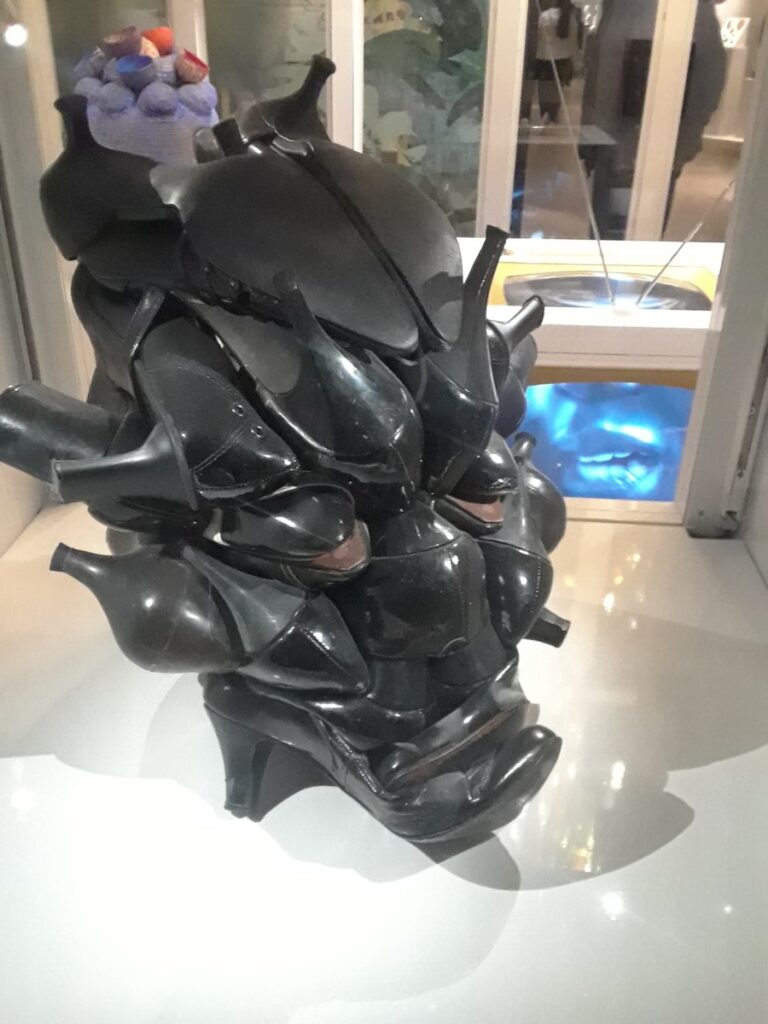
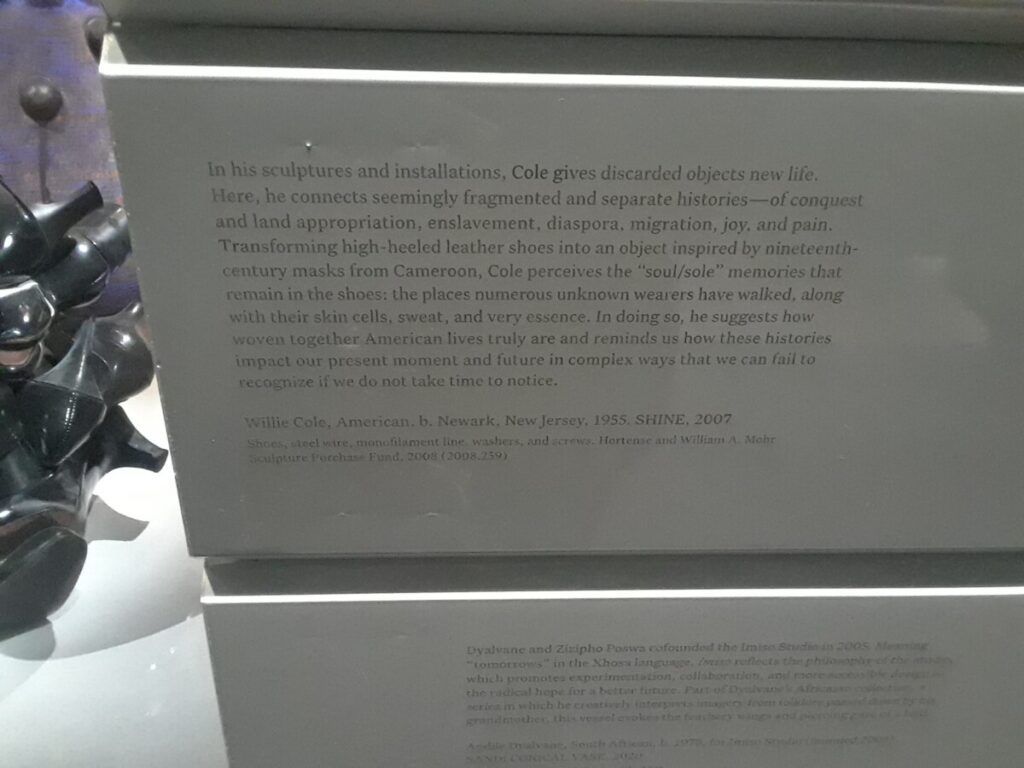
This art piece is about having a thing that can show you information, and at the same time you can watch in your television. Especially back then. Regardless if it looks like some type of bird, in a gold color. Putting that aside, it pays homage to Jenn Nkiru, a british born filmmaker. She had a decent from nigeria. Since Cosmic archaeology is where visual memory and history can really mix with each other. Thertefore my experience of it is pretty positive.
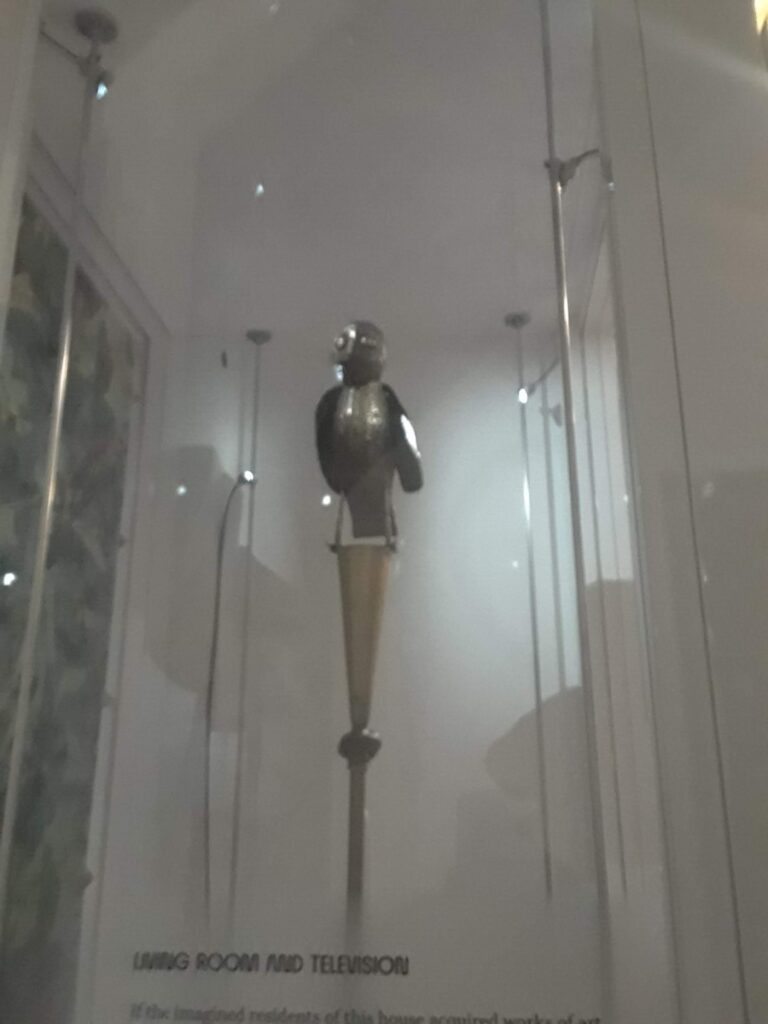
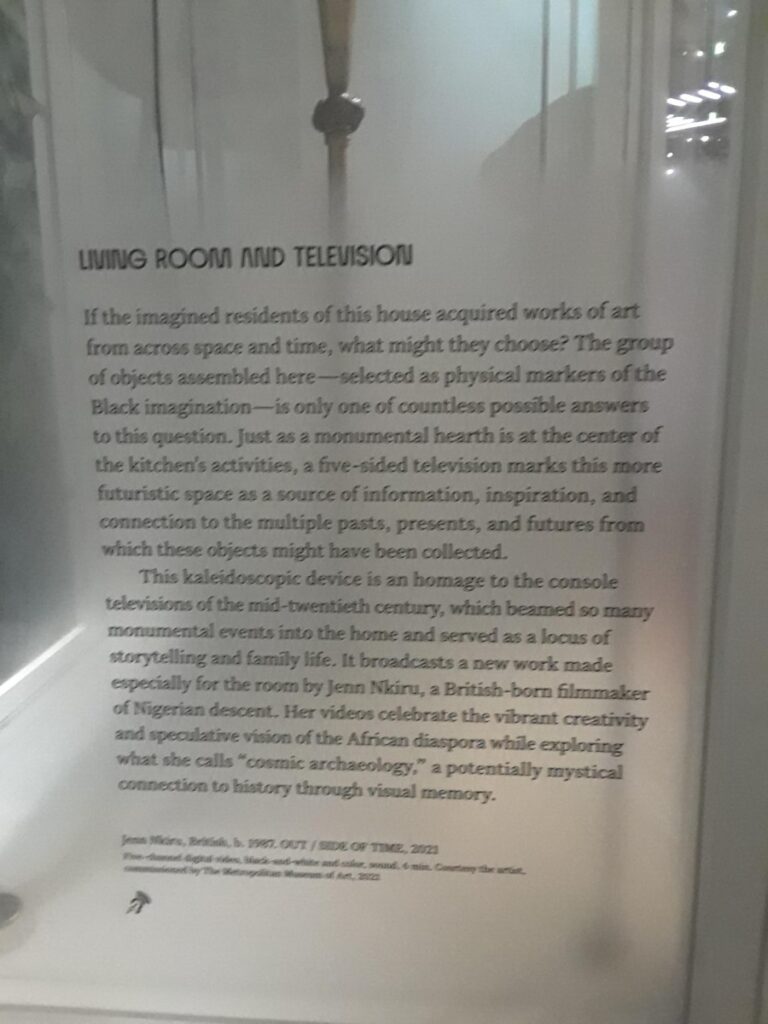
This art piece looks like a ship steering wheel that has been cut off. Especially if you think about it from that context. It’s all about a person who born somewhere near a garbage dump. Can you believe that? it’s really crazy. Yet this person lived in this area.
This person was a guy. His name was Cyrus Kabiru. What was able to transpire was, as a child, kabiru did his best to make junk so meaningful.
By collecting some of it and assembling it together. That is one main way he achieved this. To explain the point a bit further, he made this thing called, Miyale de Blue. Which is actually supposed to be a transiotor radio. Not a cut off ship steering wheel. Apparently he retrofitted it. That means he added an item that was not available in the first place, when it was made.
This thing was made in a way to hear his grandma’s news of the day, in an era where was everything was making its move to the online realm (so to speak). It has some blue in it, on the sticks itself. If you look carefully, there is some green in it, as well. Therefore my experience to it is pretty positive.
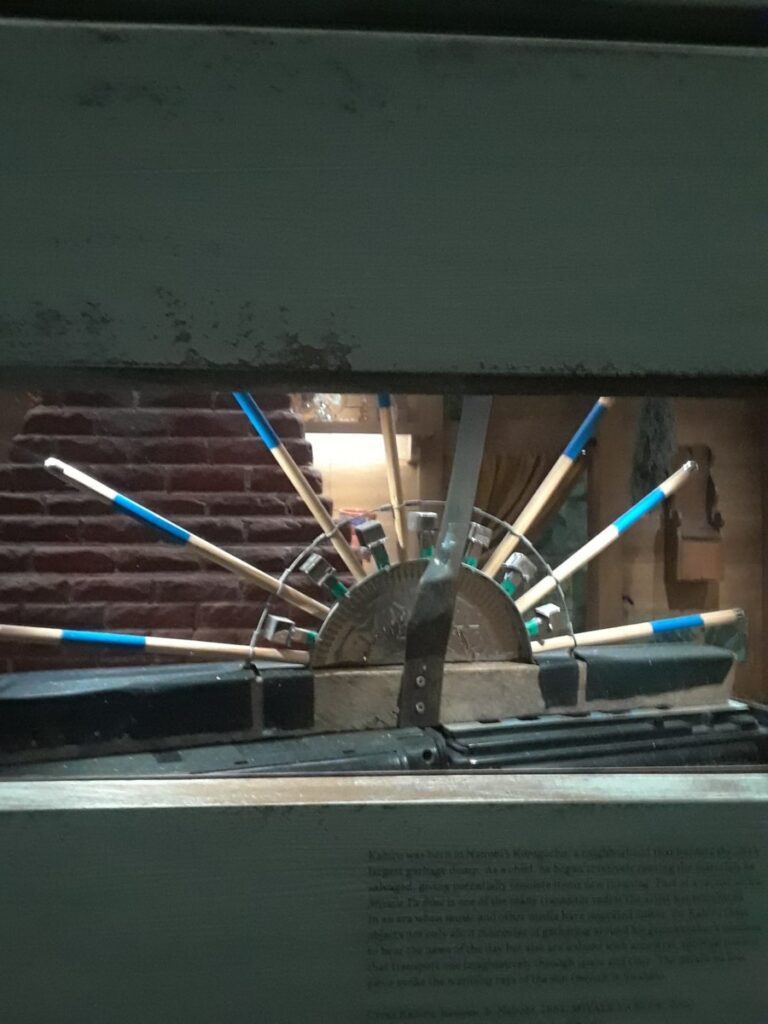
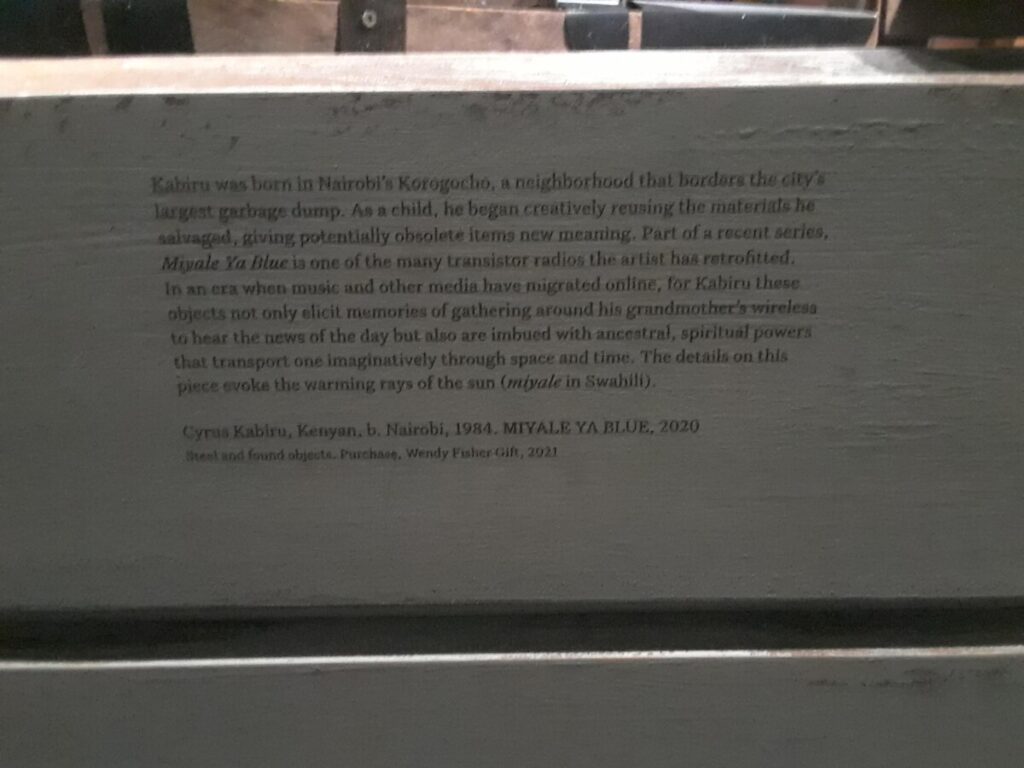
I ALSO went to the Arms and armor exhibit.
Something to note about this exhibit, is that it made to give information and show it to many visitors in person, or online. Showcasing the art that went into these types of coverings and weapons, back in these times. From the swordsmen, gunmakers and even armorers who made created such objects, to begin with. Almost 14 thousand objects is what this collection has to offer. So we can all learn about it.
One of the things i thought was visually appealing was this gray half armor sculpture because it signifies the coverings of how these types of warriors had to fight back in the day just to protect themselves. After all, Everybody knows when you go into battle, you need to stay protected. These were one of the best ways to do so. Especially in these days.
Apparently the fanlike plates were from switzerland. They have paulderons too. which are basically shoulder defenses. probably shoulder pads back in the day. The neuremberg mark and the armorer’s mark is what i don’t see from this picture. But they say it’s there in its own places, upon the whole artwork. So let’s just take it for what it is.
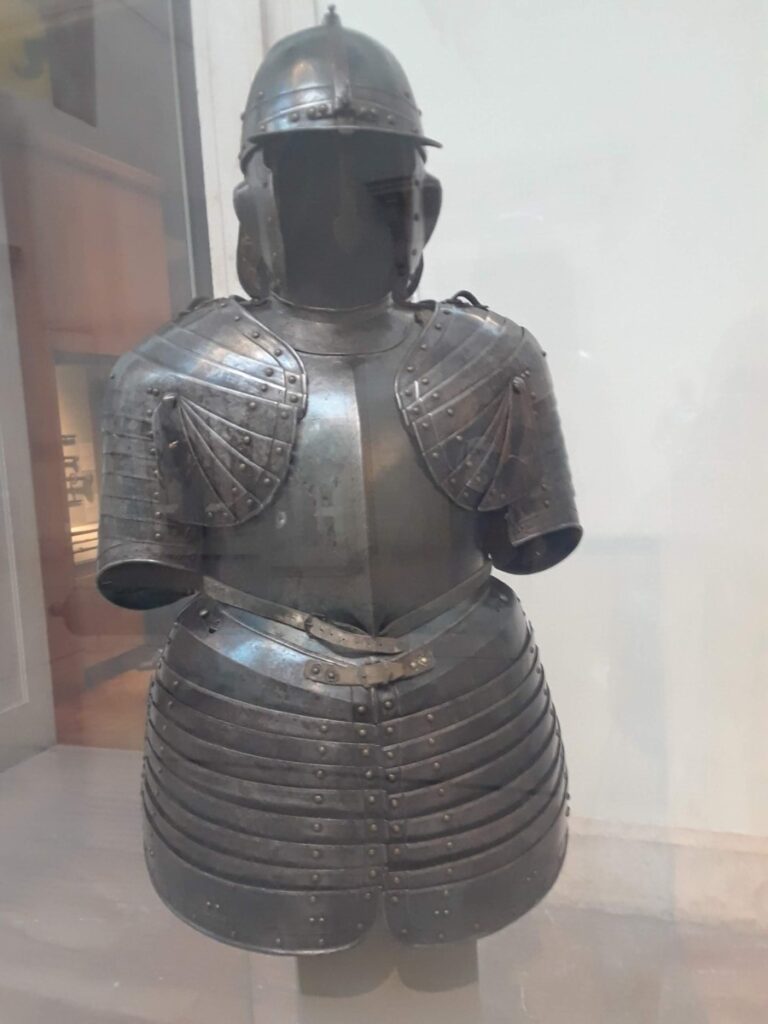
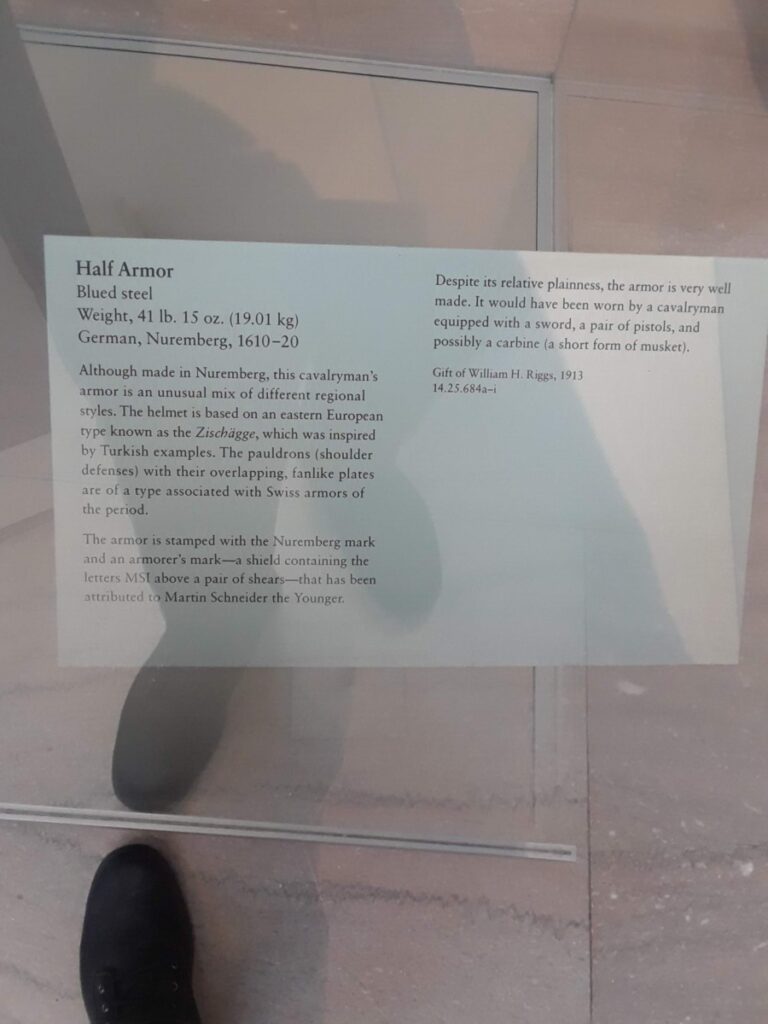
The difference of being in person and experiencing these things in person, vs doing that online is that you won’t feel other people looking at the same things as you, or different exhibits across the museum, plus overhearing other people talking about whatever artwork they are talking about unless they’re is a virtual world about it. In which i don’t think there is. So in order to learn more about these things, so you can be impacted and wanna learn more about every artwork on display, go in person and don’t just look it up on the internet. Only if you are really interested in doing such activity.






